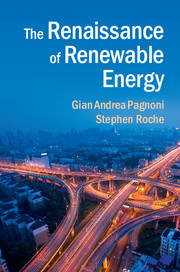Introduction
Published online by Cambridge University Press: 05 March 2015
Summary
Renewable energy, far from being a new idea, was the norm for most of human history. The ability, developed in the late eighteenth century, to harness the ‘fossilised’ energy of coal and oil on a large scale transformed human societies. It was no accident that the explosion of the Earth’s human population, from roughly 1 billion in 1800 to more than 6 billion in 2000, coincided with this energy revolution. The question people have been asking in increasing numbers for the last fifty years is, “Can it go on like this?” Most are in agreement that it can’t. Whether one views climate change, population growth or resource depletion as the greatest threat to human survival, the basic problem is the same: there are limits to what our planet can provide or absorb. The renaissance of renewables is inevitable because sooner or later the oil, gas and coal will run out; because by releasing in decades the carbon absorbed over millennia we are choking the planet; and, lastly, because of economics – whereas fossil fuels are likely to become more expensive over time, renewables can only get cheaper.
This book covers most of the issues related to renewable and sustainable energy – from the purely technical to the historical, political, social and economic. It begins with a broad introduction to energy, both as a concept and a practicality, outlining the history of human energy use, profiling our current consumption, and assessing likely prospects for the future. In doing so, it uncovers and unpacks the various factors that influence our energy choices.
- Type
- Chapter
- Information
- The Renaissance of Renewable Energy , pp. 1 - 2Publisher: Cambridge University PressPrint publication year: 2015



